Introductions
Pine(Pinus) belongs to the family of trees known as conifers. Conifers are a group of cone-bearing seed plants. The leaves of pine are thin and have a needle-like appearance. It is usually found in a variety of locations in Northern, Central, and Eastern Europe.
Pine trees are evergreen. Pine would be considered softwood. That means it is softer than hardwood, but this does not mean that it is weaker than hardwood. Pines are long-lived; they typically reach ages of 100–1,000 years, depending on their location and atmosphere.

There are more than 126 classified species of pine. Almost all species of pine are close to each other. They differ slightly in properties of color, hardness, workability, and rot resistance. They are used based on their properties.
Pine Wood is known for its availability, durability, workability, and great appearance. Its sapwood is yellowish-white to reddish-white, and the heartwood is reddish-brown in color.
| # | Pine Wood |
| Scientific name | Pinus |
| Color | Yellowish or Whitish to Reddish-Brown |
| Height | 3–80 m (10–260 ft) tall |
| Type | Softwood |
| Workability | Good workability with both hand and machine tools. |
| Finishing | Good finishing qualities |
| Availability | It is easily available in many regions |
| Durability | Good durability for interior applications and overall good for exterior applications |
| Uses of Pine | Furniture, window frames, paneling, floors, and roofing |
Pine Wood Uses
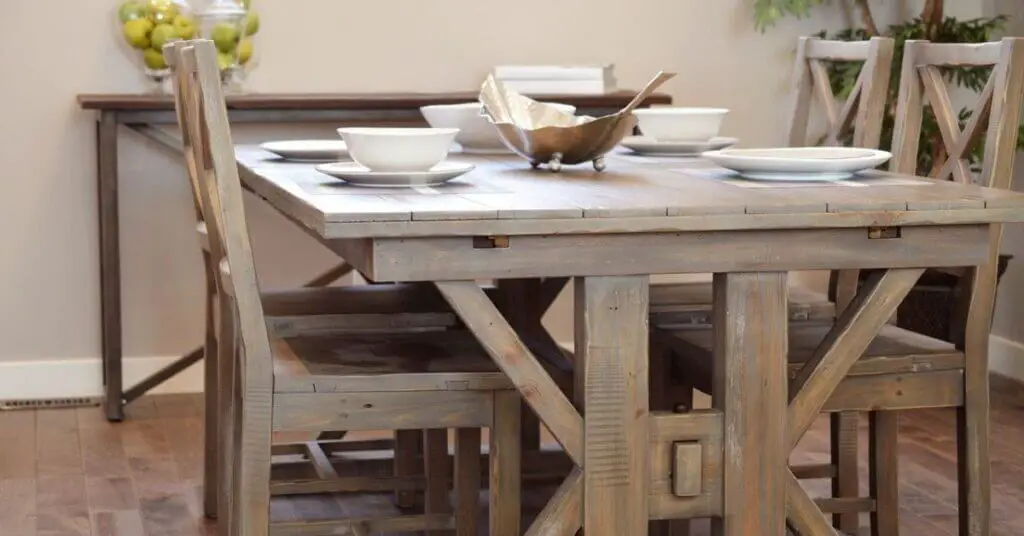
Furniture
Pine Wood is a great choice for furniture projects. It is known for stiffness and resistance to shock. Many cabinetmakers prefer to use knotty pine wood and plywood. However, It can be a bit expensive compared to plywood.
Toughness, attractive color, shock resistance and fine grain are essential for quality furniture. All these qualities are found in pine wood. However, some pine species are not considered suitable for furniture. But most pines are suitable.
Moldings and Trim
Being a softwood, Pine wood is very easy to work with. Therefore, it is considered suitable for window and door frames, baseboards, cabinet trim, chair rails, and picture frames.
It is very important to have great workability of wood for moldings and trimming because small hand tools and machinery are used for this, which is usually a little hard to do with other hardwood.
Flooring and Decking
Generally, most people prefer to use hardwood for flooring. But pressure-treated cedar wood can also be an economical option. If it is taken regular care of, its lifespan can be around 15 years or even more.
The decking is constantly exposed to weather and soil. In this case, it is also very important to have wood rot and decay resistance. Pines do not have very good insect- or decay-resistant qualities after logging. So, pressure-treated pine is a better choice for outdoor wooden projects.
Pressure-treated pine has many benefits; it is more moisture-resistant, fungus-resistant, insect-resistant, fire-resistant, and more durable than ordinary pine wood. Its price is slightly higher than ordinary pine but is less than many other hardwoods.
Ornamental and food
Many dwarfs and beautiful pine species are used as ornamental trees in parks and larger gardens. Pines are also commercially grown and harvested for Christmas trees in many countries.
Some species of pine trees give a large number of seeds, which are called “pine nuts”. It is available in the market for cooking and baking.
Pine Wood Advantages
1. Light Weight
Light-weight wood has good workability properties. It can be easily moved from one place to another, and it can be easily worked with at high altitudes.
If we talk about Eastern White Pine, it weighs about 25 lbs / ft3 (400 kg / m3), and Southern yellow pine, about 41 lbs / ft3 (650 kg / m3), which is less than many other softwoods and hardwoods.
2. Great Workability
Many woodworkers prefer pine because of its good workability. Because pine wood projects are finished so quickly, they are easy to work with both hand and machine tools. It glues and finishes well.
If you work with pine, there is no need for pre-drilling for nail and screw placement, which saves a lot of time on a large project. Many woodworkers say that they do not have to constantly change blades when working on pine wood, which saves them a lot of time.
3. Durability
Many people have misconceptions that softwood is less durable than hardwood. But this is not completely correct. Since any wood is softwood or hardwood, you cannot predict its durability.
Pine wood has good durability, but it also depends on its use. Pine wood is not suitable for outdoor use. But still, if you want to use pine for outdoor applications, always choose pressure-treated pine because of its other great quality.
4. Attractive Grain
Pine has a light color with a medium texture and a closed grain. Because of its light hue, it easily absorbs stains, allowing you to achieve any desired color. Additionally, pine tends to darken over time.
5. Price
Pine is an inexpensive softwood, available at a lower price than many other softwoods and hardwoods on the market. There are several reasons for the low price of wood, such as high availability and fast growth. The price of exporting other rare woods from one country to another increases.
6. Availability
Pine wood is mainly found in northern, central, and eastern Europe, but many species of trees are grown in many other places. Red pine and Australian pine are fast-growing trees, with a growth rate of about 1-2 feet per year, so their needs can be easily met.
Pine Wood Disadvantages
1. Scratches and Dents
After all, pine is a softwood, so it also has some of the disadvantages of softwood, such as being easily scratched and dented. In comparison, most hardwoods are less prone to scratches and dents.
There are many reasons for having Scratches and Dents. But the main reason is low hardness; the hardness of the wood of the pines is not very much. For example, Eastern white pine has 380 lbf (1,690 N), and Southern yellow pine has 870 lbf (4,120 N) Janka hardness, which is not enough to withstand dents and scratches.
2. Defects
Most of the wood in the pines is defective because it is easy to rot.
3. Warping and Shrinkage
Pine wood has a tendency to warp and shrink, especially when exposed to changes in humidity or temperature.
3. Required maintenance and care
Pine wood requires more regular care than hardwood. It cannot withstand moisture for long periods. If any part is rotting, remove it immediately and use oil and wax regularly.
Janka Hardness of Pine Woods
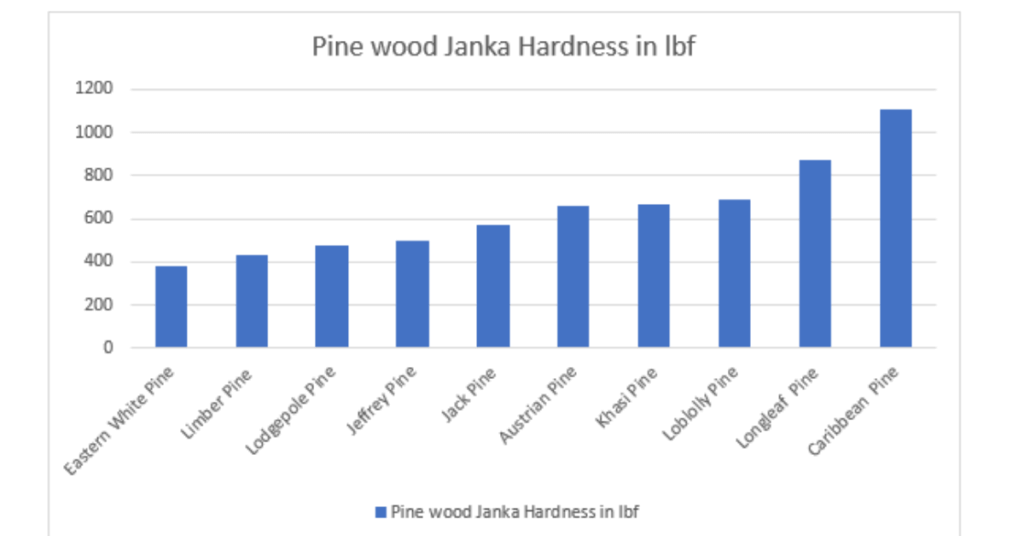
How to Identify Pine Wood?
The wood can be identified by its color, appearance, and grain. The heartwood color of pine is light brown to reddish-brown, and the sapwood color is pale yellow and sometimes white. Its color gets darker over time. Pine Wood has many dark brown circle knots, giving them special recognition.
Pine has a straight grain with an even, medium texture, has medium-large open grain. So it is very easy to work with it. However, due to the open grain, it absorbs moisture quickly.
Western White Pine and Eastern white pine have a faint, resinous odor while being worked. The heartwood of pine is rated as moderate to low in decay resistance.
Is Pine Wood Waterproof?
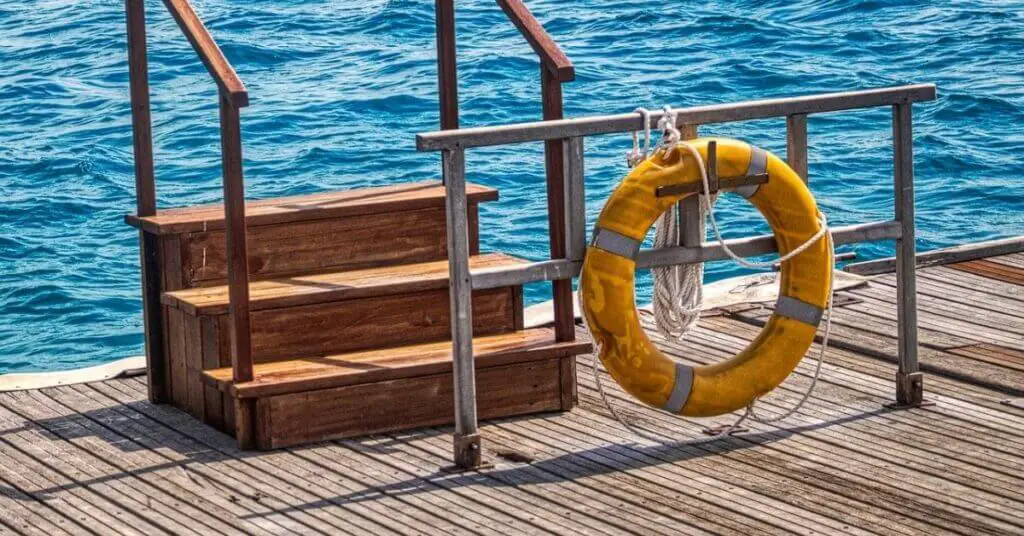
No, pine is not waterproof. It starts rotting when it comes in contact with moisture and soil for a long time. Although no wood is 100% waterproof, some woods, such as white oak and teak, perform well in moisture and are good for wet areas.
Pine absorbs moisture and causes problems like warping, rot, cracking or warping, which no customer wants to see with their floors and furniture.
But pinewood can also be made water resistant to some extent. This will require an oil-based primer or stain and water sealant.
Apply one or two coats of water sealant to the surface of the wood. Let the pieces dry thoroughly. Next, apply the oil-based primer or stain with a brush once or twice so that the entire piece of wood is thoroughly covered. By doing this, the open pores of the wood close, and it is not able to absorb moisture.
Pine Wood for Smoking Meat
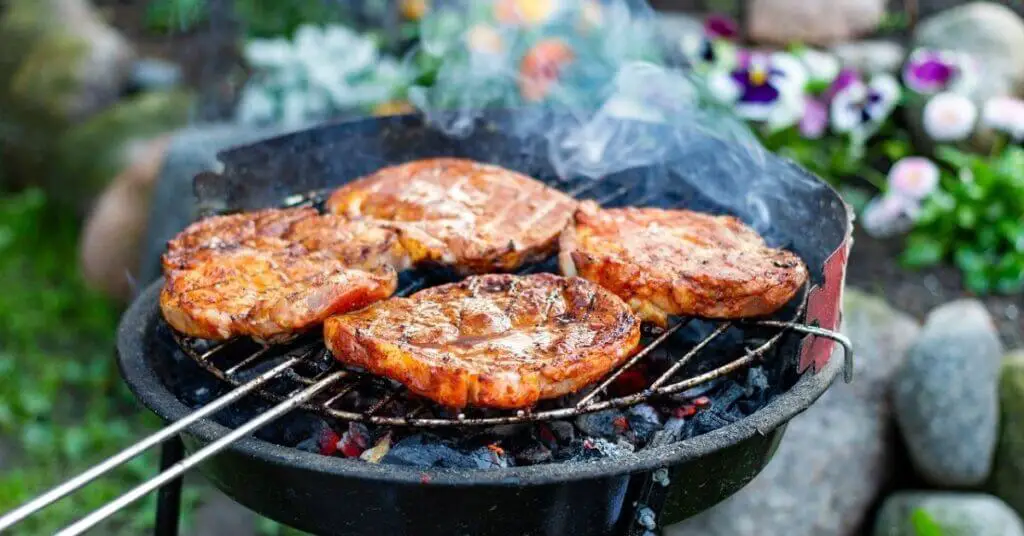
Pine is not suitable for smoking meat because it contains a lot of resin. Resin leaves black sooty smoke on burning and spoils the taste and color of meat. You should never use pine wood for smoking meat.
Pine wood also has a lower density because of its lower BTU value. The British Thermal Unit (BTU) measures the heat content of fuels or energy sources.
Generally, hardwoods like hickory, oak, maple, pecan, and alder are popular choices.
Types of Pine Trees
1. White Pine (Pinus Strobus)
White Pine is native to eastern North America. It grows well in well-drained or sandy soils. White pine is the most common pine species. It has low density, fine texture, and even grain. Eastern White Pine has 380 lbf (1,690 N) and western white pine has 420 lbf (1,870 N) Janka Hardness. Therefore, it does not have a good density.
Their trees are 65–150 ft tall, and trunk diameter is 2–5 ft. It is much preferred due to its light brown color and grain pattern. It is mostly used for furniture, lumber, boat building, millwork, and interior projects.
2. Austrian Pine (Pinus nigra)
Austrian pine occurs across Southern Mediterranean Europe and Asia Minor. Their trees are about 20–55 meters (66–180 ft) tall. The cone fruits come in May and June, and the cone is 5–11 cm long.
Its wood color is a pale yellow to light reddish-brown. Austrian Pine has 660 lbf (2,920 N) Janka Hardness. It is widely used for paper (pulpwood), boxes/crates, and construction lumber.
3. Caribbean Pine (Pinus Caribaea)
Caribbean pine is native to Central America, Cuba, the Bahamas, and the Turks and Caicos Islands. Their trees are about 65–100 ft (20–30 m) tall and have a 2-3 ft (.6–1 m) trunk diameter. Its Janka hardness is 1,110 lbf (4,920 N), twice that of the Austrian Pine. It is used in paper (pulpwood), veneer, plywood, flooring, and construction lumber.
4. Jack Pine (Pinus banksiana)
Jack Pine is native to Canada and the northern United States. It grows about 9–22 m (30–72 ft) in height and 1-2 ft (.3-.6m) trunk diameter. It is yellowish-white and orangish-brown.
Jack Pine has straight grain with a medium texture and great workability. Generally, it is used for Paper (pulpwood), boxes/crates, pallets, poles, and construction lumber.
5. Jeffrey Pine (Pinus jeffreyi)
Jeffrey Pine, also known as yellow pine and black pine, is native to California and northern Mexico. Its tree is 25 to 40 m (82 to 131 ft) tall, and its trunk diameter is 2-4 ft (.6-1.2 m).
It has a straight grain with a medium texture. Its color ranges from yellowish-white to reddish-brown. It is used for veneer, plywood, sheathing, subflooring, boxes, crates, interior trim, cabinetry, and construction lumber.
6. Khasi Pine (Pinus kesiya)
Khasi pain is found almost all over Asia. Its tree is 100–130 ft (30–40 m) tall, with a 3–4 ft (1–1.2 m) trunk diameter. Its wood color is reddish-brown to pale yellow. It is used for Paper (pulpwood), boxes/crates, furniture, and construction lumber.
7. Limber Pine (Pinus flexilis)
Limber pine is native to the Western United States, Mexico, and Canada. Its tree is about 20-25 meters (65-80 ft) tall. Limber wood color ranges from pale yellow to light brown. Its color becomes dark brown with age.
It is used for fuelwood, boxes, and rough construction. It is not considered suitable for furniture. Because it is very soft (430 lbf (1,910 N) Janka Hardness) and light in weight (28 lbs / ft3 (450 kg / m3)).
8. Loblolly Pine (Pinus taeda)
Loblolly is native to the Southeastern United States. It has a tree length of about 100–115 ft (30–35 m) and a trunk diameter of 1.5–5 ft (.4–1.5 m). This pine species is found mostly in lowlands and swampy areas. Loblolly tree size is 30–35 m (98–115 ft) tall, with a 1.5-5 ft (.4-1.5 m) trunk diameter.
Its heartwood is reddish-brown to yellowish-white, and the grain is straight with a uniform texture. It is a versatile wood used for roof trusses, poles, joists, piles, and many more applications.
9. Lodgepole Pine (Pinus contorta)
Lodgepole pine is found mostly in western North America. The other name of Pinus contorta is Shore Pine. This tree grows to a height of 40 to 50 m (130 to 160 ft) and a trunk diameter of .3 – .6 m (1–2 ft ).
Its wood is reddish / yellowish-brown and is used for veneer, plywood, sheathing, subflooring, boxes, crates, posts/poles, interior trim, cabinetry, and construction lumber.
10. Longleaf Pine (Pinus palustris)
Longleaf pine is native to the Southeastern United States. It reaches a height of 100-115 ft (30-35 m) and a diameter of 2-3 ft (.6-1 m). Its wood color varies from reddish-brown to yellowish-white. Its Janka hardness is 870 lbf (4,120 N).
Longleaf pine is a better option for interior applications, while pressure-treated wood is suitable for exterior applications.
11. Maritime Pine (Pinus pinaster)
Maritime pine is native to the Mediterranean region. It is a medium-sized tree, reaching 65-115 ft (20-35 m) tall and with a trunk diameter of 2-4 ft (.6-1.2 m).
Wood is light reddish brown to pale yellow to nearly white. Color tends to darken with age. It is a very soft wood with a Janka hardness of 390 lbs (1,740 N) and a dried weight of 31 lbs / ft3 (500 kg / m3).
Maritime pine has good workability and is used for Paper (pulpwood), flooring, boxes/crates, and construction lumber.
12. Ocote Pine (Pinus oocarpa)
Ocote Pine is native to Mexico and Central America. It is also known as Pino Amarillo, Pino Avellano, and Mexican yellow pine. Its Heartwood is light brown, and the sapwood is a pale yellowish white to white.
Its tree length is about 80–115 ft (24–35 m) and its trunk diameter is 2-3 ft (.6–1m). Ocote pine is used in paper (pulpwood), veneer, plywood, boxes/crates, flooring, and construction lumber.
13. Patula Pine (Pinus patula)
The Patula pine tree is native to the highlands of Mexico. Its tree is 100–130 ft (30–40 m) in length and the trunk diameter is about 2–3 ft (.6–1m). It is softwood with a Janka Hardness of 550 lbf (2,450 N). Patula Pine Wood is used for paper (pulpwood) and boxes/crates.
14. Pinyon Pine (Pinus edulis)
Pinyon pine is native to southwestern North America. It produces pinyon nuts and contains fat and calories. Its tree length is about 30–50 ft (9–15 m) and its trunk diameter is 1-2 ft (.3 – .6 m).
There are many branches in the tree, so there are many knots. It has an irregular grain with a medium to fine texture. It is used for firewood, paper (pulpwood), and charcoal.
15. Pitch Pine (Pinus rigida)
Pitch pine is native to eastern North America. It is a small tree with a length of about (6–30 m or 20–98 ft). Its Janka hardness is 620 lbf (2,760 N). But it is very strong and can withstand heavy loads. It is used for bridges, beams, poles, and railroad ties.
Its heartwood is reddish-brown, and the sapwood is yellowish-white and Straight-grained.
Conclusion
Pine is a superior wood species; it has many good properties. It is ideal for furniture, flooring and construction, but it also has some disadvantages for some uses.
Pine is a better choice for interior applications. If planning an outdoor woodworking project, use pressure-treated pine or consult your lumber dealer once. Pine wood is not suitable for smoking and firewood. So it is better to use some hardwood for smoking.
Read also Beech vs Pine Wood | Which is Best for Your Furniture?
Poplar wood vs Pine | Which is Better for Your Applications?

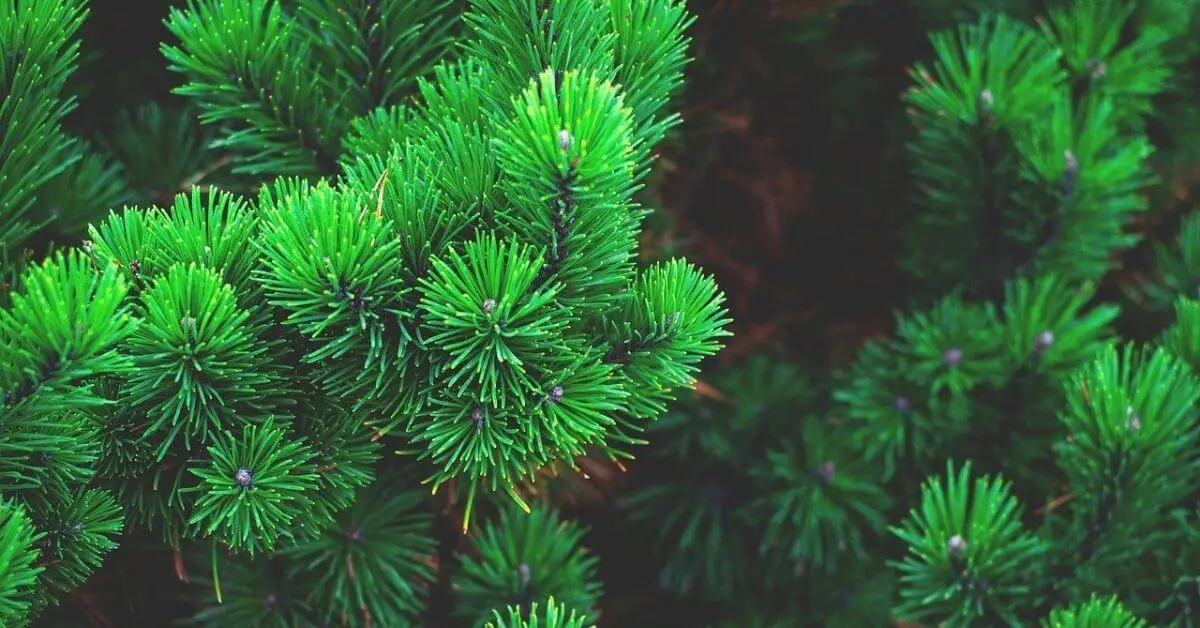
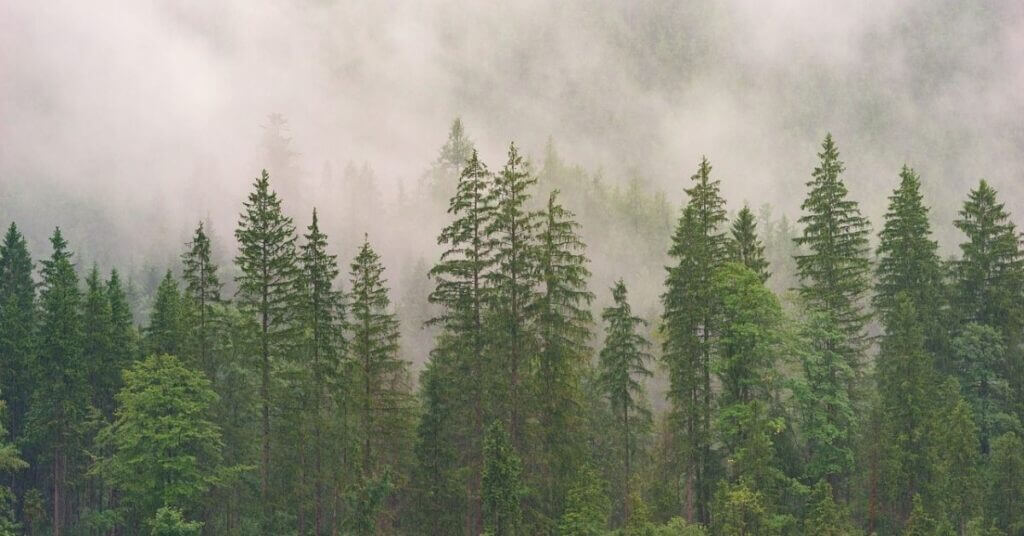
Comments are closed.